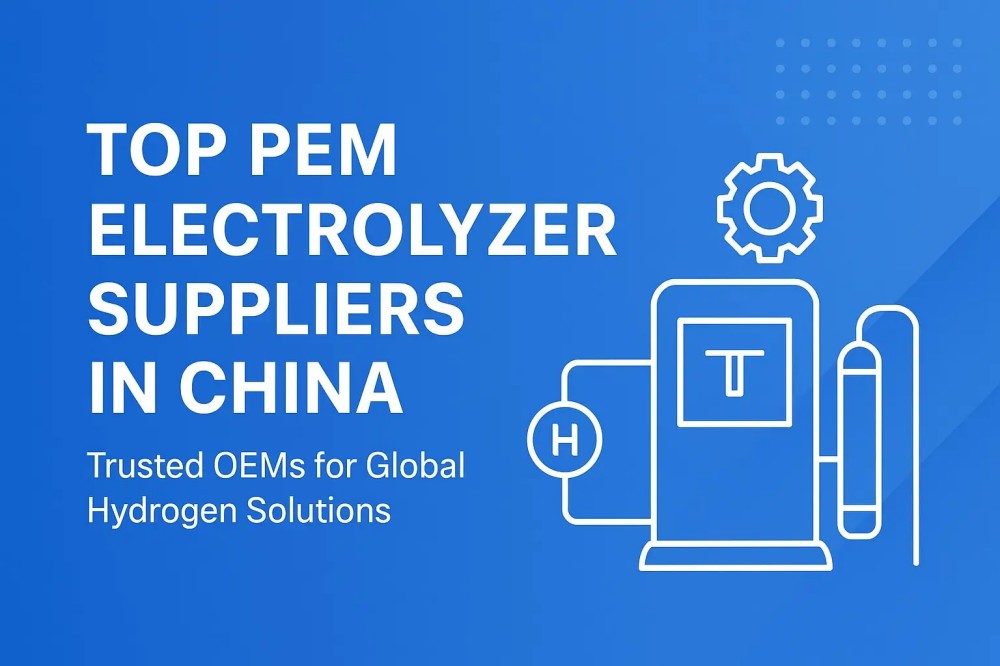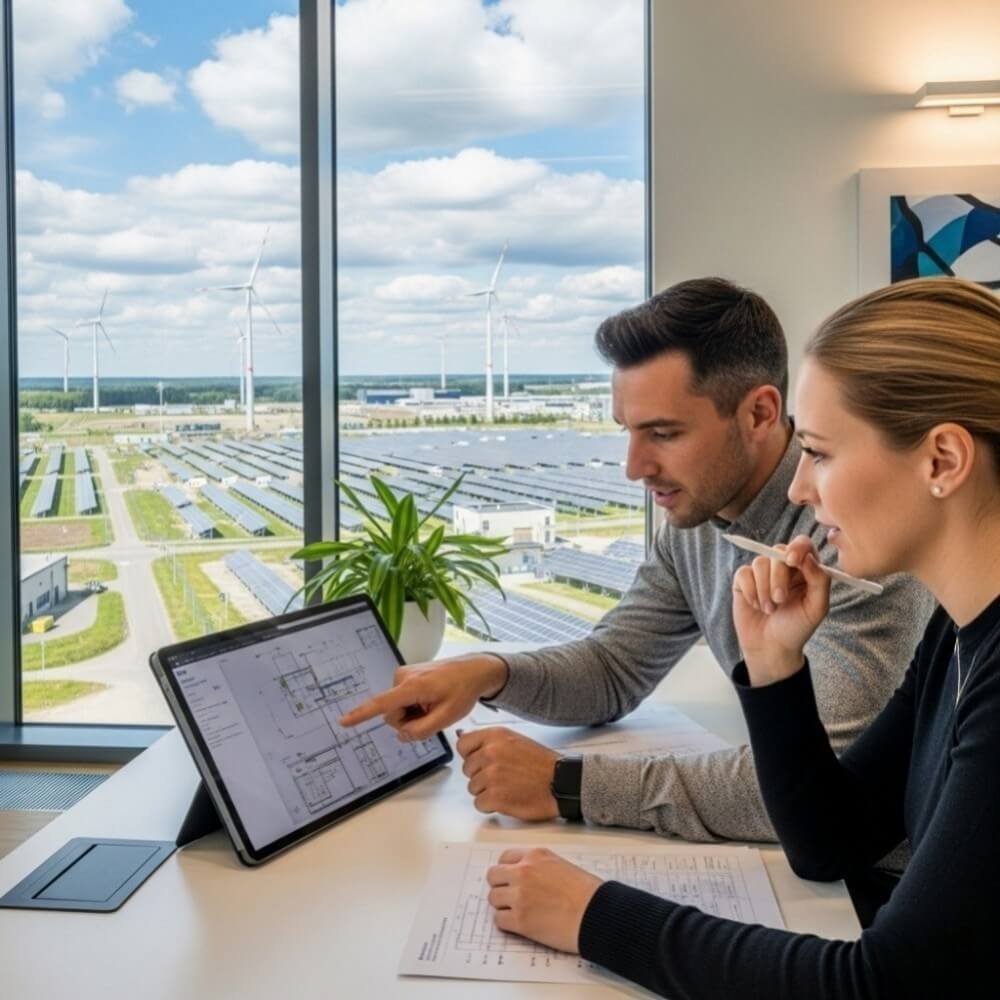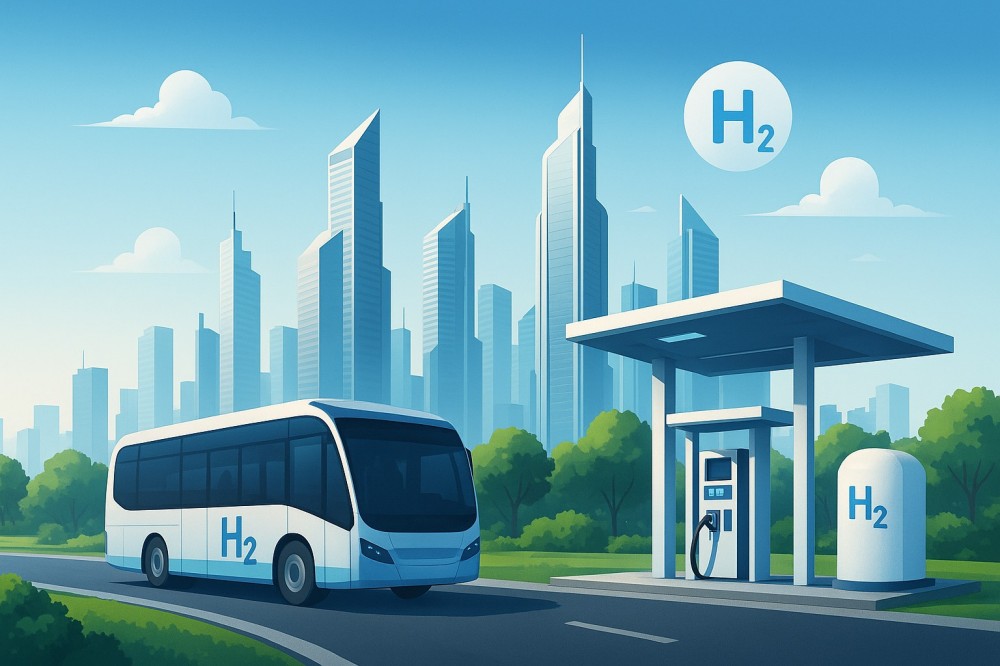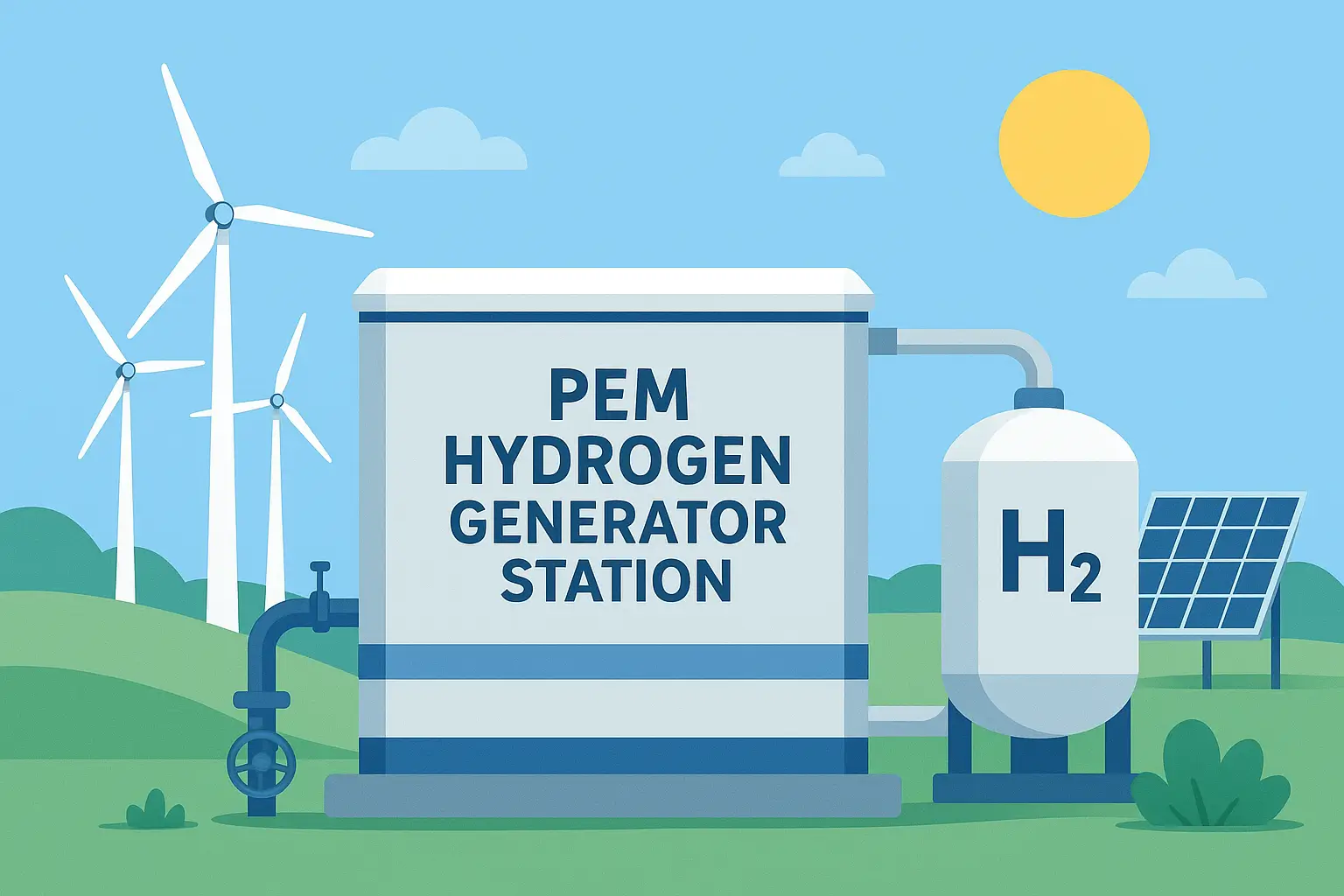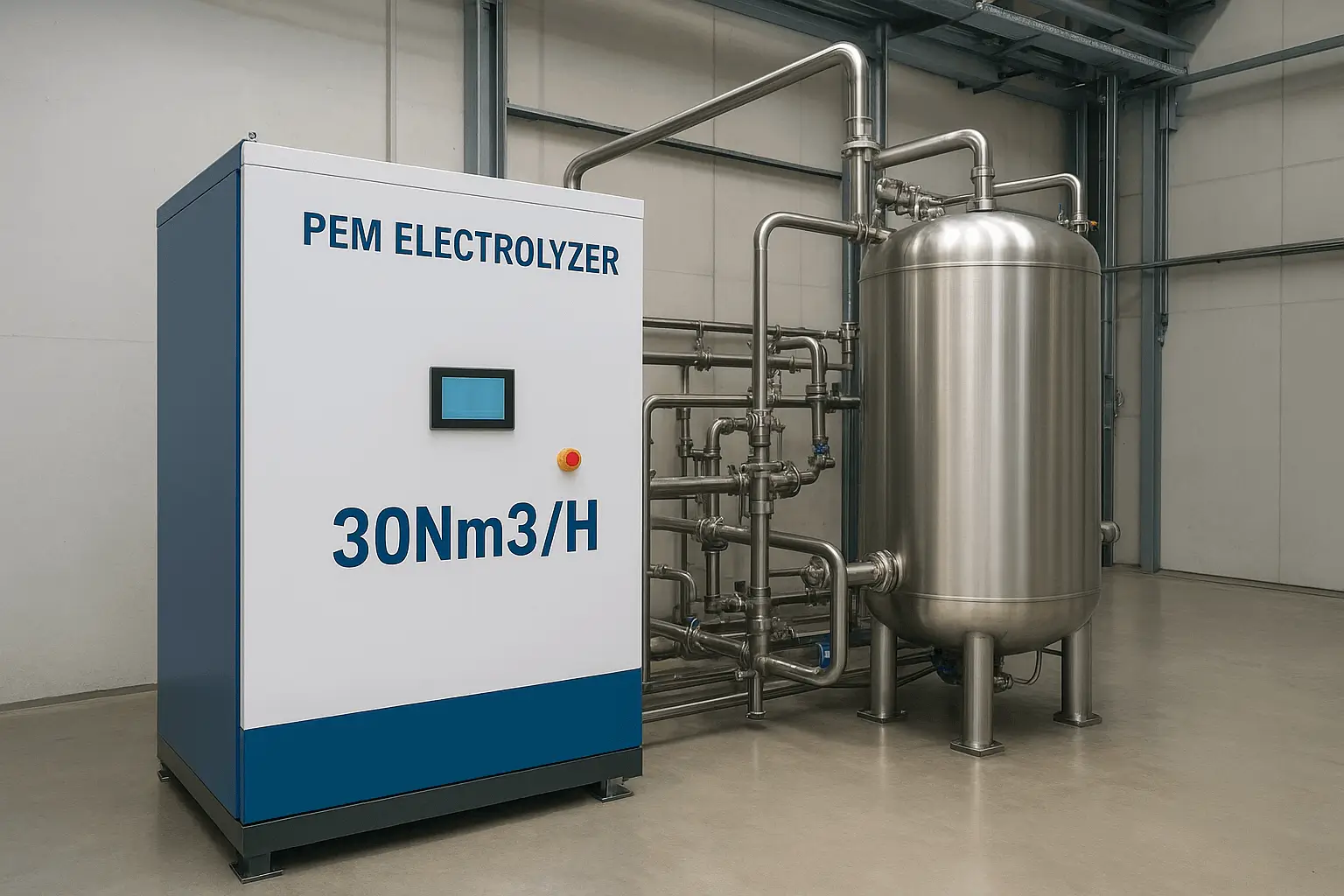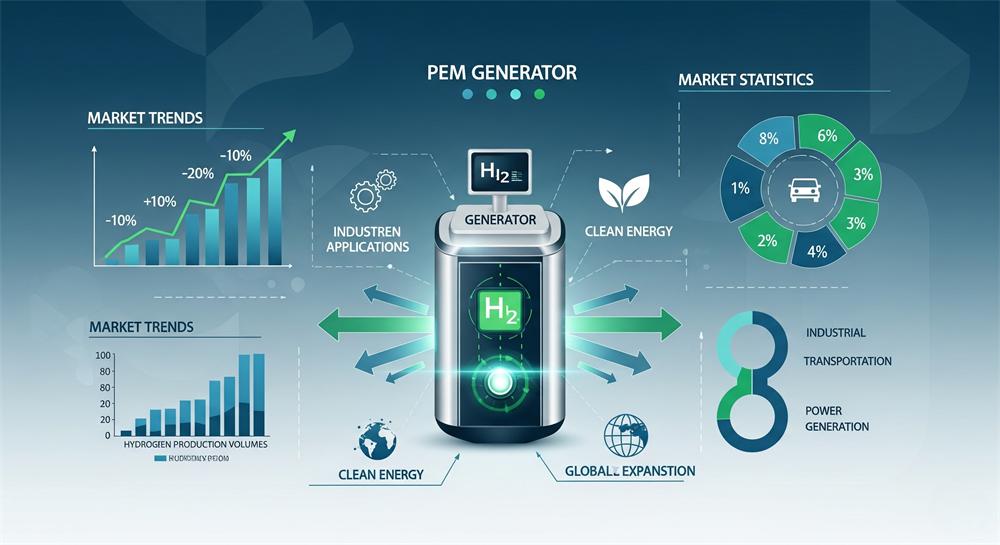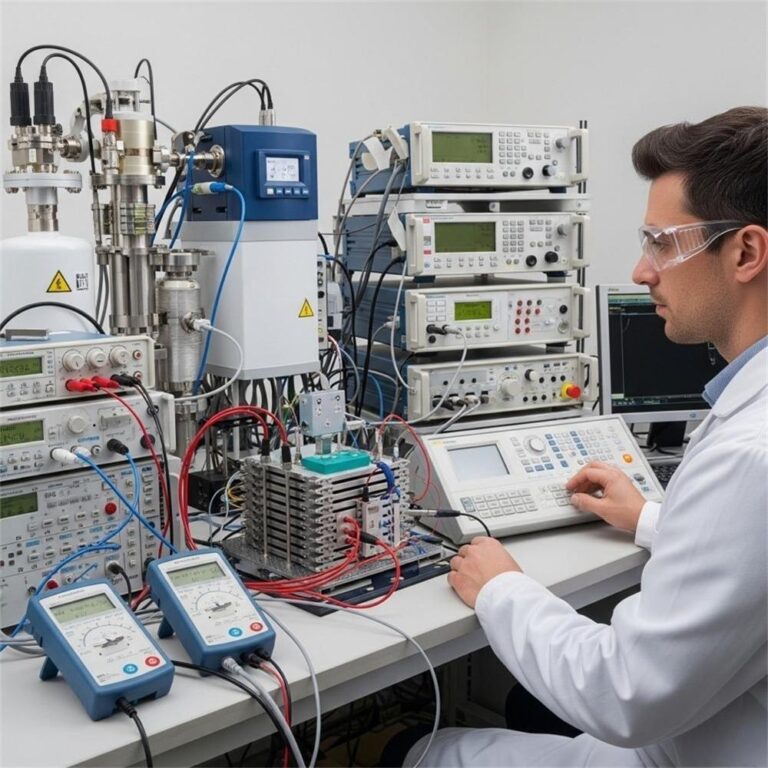I. Introduction
The global shift towards sustainable energy solutions has spotlighted hydrogen as a clean and efficient energy carrier. Among the various methods of hydrogen production, alkaline electrolysis stands out for its cost-effectiveness and reliability.
Chinese manufacturers have been at the forefront of producing 300ml/min alkaline hydrogen generators, catering to diverse industrial needs.
This article delves into the performance, cost, and customer feedback of these generators, providing valuable insights for B2B procurement professionals and enterprise decision-makers.
II. Key Chinese Manufacturers of 300ml/min Alkaline Hydrogen Generators
Overview
China’s manufacturing sector has seen significant advancements in hydrogen generator production, with several companies offering 300ml/min alkaline models. These manufacturers emphasize quality, innovation, and cost-efficiency to meet global demand.
Manufacturer Profiles
- heletitanium Hydrogen Energy Co., Ltd.
- Background: Established in 1998, specializing in hydrogen energy solutions.
- Key Products: HDSHC-300 alkaline hydrogen generator.
- Specialization: Focus on laboratory and industrial applications.(https://heletitaniumhydrogen.com/, https://heletitaniumhydrogen.com/service/, https://heletitaniumhydrogen.com/products)
- heletitanium Co., Ltd.
- Background: Based in Guangdong, China, with a global customer base.
- Key Products: HDHL-300 PEM hydrogen generator.
- Specialization: Emphasis on laboratory equipment and gas purification.(heletitaniumhydrogen.com, heletitaniumhydrogen.com/products)
- heletitaniumhydrogen Co., Ltd.
- Background: Located in DOngGuan, focusing on biomedical and laboratory equipment.
- Key Products: HDIHG-300ML alkaline hydrogen generator.
- Specialization: Integration of advanced materials for improved efficiency.(https://heletitaniumhydrogen.com/)
Manufacturing Capabilities
These manufacturers boast robust production capacities, with monthly outputs ranging from 300 to 1000 units. They adhere to international certifications such as ISO and CE, ensuring quality and safety standards.
Competitive Advantages
- Innovation: Continuous R&D efforts leading to improved efficiency and reduced operational costs.
- Customization: Ability to tailor products to specific client requirements.
- Global Reach: Established export networks catering to clients worldwide.
III. Alkaline Technology Implementation in 300ml/min Generators
Explanation of Alkaline Electrolysis
Alkaline electrolysis involves the decomposition of water into hydrogen and oxygen using an alkaline electrolyte, typically potassium hydroxide (KOH). This method is renowned for its durability and cost-effectiveness, making it suitable for industrial-scale hydrogen production.
Design and Components
Typical 300ml/min alkaline hydrogen generators comprise:
- Electrodes: Made from nickel-based materials for enhanced conductivity.
- Electrolyte Solution: Aqueous KOH solution facilitating ion transport.
- Cell Configuration: Stacked cells to optimize space and efficiency.
Control Systems
Advanced control systems monitor and regulate hydrogen production, ensuring consistent output and safety. Features include automatic pressure regulation, flow rate adjustment, and real-time monitoring.(https://heletitaniumhydrogen.com/)
Safety Features
Safety is paramount, with features such as:
- Overpressure Protection: Automatic shutdown in case of pressure anomalies.
- Leak Detection: Sensors to identify and alert for hydrogen leaks.
- Backflow Prevention: Mechanisms to prevent reverse flow of gases or electrolytes.(https://heletitaniumhydrogen.com/)
IV. Performance Metrics: A Comparative Analysis
Hydrogen Purity
Manufacturers consistently achieve hydrogen purity levels of ≥99.999%, suitable for sensitive applications like gas chromatography and fuel cells.(https://heletitaniumhydrogen.com/)
Hydrogen Output Rate
The 300ml/min output is maintained under standard operating conditions, with some models offering slight variations to accommodate specific needs.
Energy Consumption
Energy efficiency is a critical factor:
- HDSHC-300: <150W power consumption.
- HDHL-300: <150W power consumption.
- HDIHG-300ML: 120W power consumption.(https://heletitaniumhydrogen.com/products/, https://heletitaniumhydrogen.com/, https://heletitaniumhydrogen.com/service/)
Operating Pressure
Operating pressures typically range from 0.2 to 0.4 MPa, with some models offering adjustable settings to suit various applications.
Lifespan and Maintenance
With proper maintenance, these generators have lifespans exceeding 10 years. Maintenance involves periodic electrolyte replacement and component checks.
Testing Standards
Manufacturers adhere to international testing standards, ensuring product reliability and performance consistency.(https://heletitaniumhydrogen.com/)
V. Cost Analysis: A Key Factor for B2B Buyers
Upfront Cost
Prices for 300ml/min alkaline hydrogen generators range between $500 to $1,500, depending on features and customization.
Operating Costs
Operational expenses include electricity consumption and maintenance. Estimated monthly costs are minimal, making them economically viable for continuous use.
ROI Calculation
Considering the elimination of hydrogen cylinder purchases and associated logistics, businesses can expect ROI within 1-2 years of operation.
Hidden Costs
Potential hidden costs may involve:
- Shipping and Import Duties: Varies based on location and quantity.
- Installation: Professional setup may incur additional charges.
- Training: Staff training for operation and maintenance.
VI. Customer Feedback and Case Studies
Summary of Online Reviews
Customers commend the reliability, ease of use, and consistent performance of these generators. Minor concerns include the need for regular maintenance and initial setup complexities.
Case Studies
- Case Study 1: A research laboratory integrated the SHC-300 generator, resulting in uninterrupted hydrogen supply and reduced operational costs.
- Case Study 2: A manufacturing firm adopted the HL-300 model, enhancing production efficiency and ensuring safety compliance.(https://heletitaniumhydrogen.com/)
Key Takeaways from Customer Experiences
- Reliability: Consistent hydrogen output meets diverse application needs.
- Cost-Effectiveness: Significant savings over traditional hydrogen sourcing methods.
- Support: Responsive customer service and technical assistance.
VII. Conclusion
Summary of Findings
Chinese-manufactured 300ml/min alkaline hydrogen generators offer a blend of performance, affordability, and reliability. Their adoption can lead to operational efficiencies and cost savings.
Recommendations
For B2B buyers:
- Assess Specific Needs: Determine application requirements to select the appropriate model.
- Evaluate Total Cost of Ownership: Consider both upfront and operational costs.
- Engage with Manufacturers: Discuss customization and support options.
Future Trends
Advancements in materials and control systems are expected to further enhance the efficiency and safety of alkaline hydrogen generators. Integration with renewable energy sources will also be a focal point.
Call to Action
Enterprises seeking sustainable and cost-effective hydrogen solutions should explore Chinese-manufactured 300ml/min alkaline hydrogen generators as a viable option.
FAQs
1. What is the primary advantage of alkaline hydrogen generators over other types?
Alkaline hydrogen generators are known for their cost-effectiveness and durability, making them suitable for long-term industrial applications.
2. How often do these generators require maintenance?
Routine maintenance, such as electrolyte replacement and component checks, is typically needed every 6 to 12 months, depending on usage.
3. Can these generators be integrated with renewable energy sources?
Yes, they can be powered by renewable energy, aligning with sustainability goals.
4. Are there safety concerns associated with hydrogen generation?
While hydrogen is flammable, modern generators incorporate multiple safety features to mitigate risks.
5. What certifications should I look for when purchasing a generator?
Ensure the generator has international certifications like ISO and CE, indicating compliance with safety and quality standards.
6. Is technical support available for international buyers?
Reputable manufacturers offer comprehensive support, including installation guidance and after-sales service, for global clients.
For more detailed specifications and purchasing options, visit [heletitaniumhydrogen](https://heletitaniumhydrogen.com/products/
VIII. Comparative Table of 300ml/min Alkaline Hydrogen Generators
| Feature | HDSHC-300 (heletitaniumhydrogen) | HDHL-300 (heletitaniumhydrogen) | HDIHG-300ML (heletitaniumhydrogen) |
|---|---|---|---|
| Hydrogen Output | 300ml/min | 300ml/min | 300ml/min |
| Hydrogen Purity | ≥99.999% | ≥99.999% | ≥99.999% |
| Power Consumption | <150W | <150W | 120W |
| Operating Pressure | 0.3 MPa | 0.2–0.4 MPa | 0.4 MPa |
| Electrolyte | KOH | KOH | KOH |
| Safety Features | Overpressure, leak sensors | Backflow, pressure sensors | Auto shut-off, overheat sensor |
| Certifications | ISO9001, CE | CE, SGS | ISO9001, CE |
| Use Cases | Lab, Industry | Lab, Gas Chromatography | Lab, Biomedical Research |
| Warranty | 1 year | 1 year | 2 years |
| Price Range (USD) | $800–$1,200 | $600–$1,000 | $500–$900 |
IX. Strategic Considerations for Bulk Procurement
Evaluating Your Organizational Needs
When planning to procure hydrogen generators for institutional or industrial use, it’s crucial to evaluate:
- Hydrogen Demand: Determine daily hydrogen volume requirements.
- Application Type: Lab use, welding, or chemical processing all have different purity needs.
- Space Constraints: Ensure your facility can house the generator safely and efficiently.
Supplier Vetting Checklist
Before selecting a supplier, verify:
- Factory Audits: Ensure manufacturing practices align with international standards.
- After-sales Support: Availability of remote and on-site support.
- Customization Options: Generator configuration for voltage, interface language, or digital integration.
- Shipping Logistics: Experience in international B2B deliveries, customs handling, and packaging.
Negotiation Tips
- Volume Discounts: Ask about price breaks for orders of 5, 10, or more units.
- Bundled Services: Include spare parts, training sessions, and extended warranties in deals.
- Sample Orders: Consider a test run with one or two units before a full-scale purchase.
X. Regulatory and Compliance Insights
China-Based Manufacturing Standards
Chinese hydrogen generator suppliers typically align with:
- ISO 9001: For quality management systems.
- CE Certification: For compliance with EU safety and performance standards.
- RoHS Compliance: Ensures no harmful substances are used.
International Compliance Requirements
Buyers in the US, EU, or the Middle East should ensure:
- FDA or equivalent lab equipment approvals (for medical/research use).
- Customs Tariff Classifications are verified to avoid import issues.
- Import Licenses are in place, especially for chemical/electrolyte shipping.
XI. Future Outlook for Alkaline Hydrogen Generators
Technological Innovations
The next generation of alkaline hydrogen generators will likely include:
- Smart Controls: IoT-connected systems for real-time diagnostics and remote troubleshooting.
- Energy Efficiency Improvements: New electrode coatings that reduce energy use by 10–15%.
- Modular Designs: Allowing stacking of units for scalability in industrial settings.
Market Trends
- Green Hydrogen Integration: As solar and wind-powered electrolysis become more common, these generators will support decentralized green energy production.
- Increased Demand in Emerging Markets: Countries in Southeast Asia and Africa are rapidly adopting hydrogen tech for healthcare and education sectors.
Final Thoughts
Chinese-manufactured 300ml/min alkaline hydrogen generators strike a compelling balance between price and performance. They are a practical solution for businesses looking to reduce dependence on bottled hydrogen and gain operational control over gas supply.
From global research labs to local manufacturing units, these systems are being adopted across sectors for their compact size, high purity output, and user-friendly designs.

